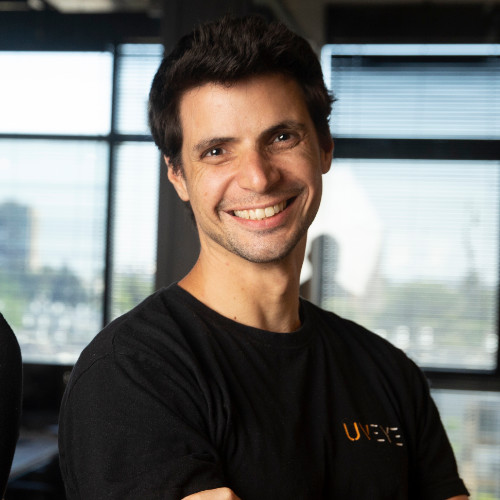Thought Leaders in Artificial Intelligence: Amir Hever, CEO of UVEye (Part 1)

This is a fascinating discussion on how UVEye is applying computer vision and machine learning to vehicle inspection for use cases such as terrorism prevention.
Sramana Mitra: Let’s start by introducing our audience to yourself as well as to UVEye.
Amir Hever: I’m the Co-Founder and CEO of UVEye. We are introducing to the market the new standard of inspection. There are a lot of different use cases to understanding the exterior or expanse of a vehicle that range from security to commercial. That includes car manufacturers, public transportation, rental companies, and insurance companies.
Sramana Mitra: Let’s take three customer use cases that illustrates three different aspects of how you create value. You choose whatever you want to highlight.
Amir Hever: The first use case would be the one that we started with. It was a security organization trying to understand whether the vehicle was modified, especially in the undercarriage. If someone attaches something to the undercarriage or modifies anything, it indicates a threat. This would be the first use case.
The vehicle simply drives through, and we’re able to notify the security guard whether there is anything suspicious that needs to be checked. This would be your first use case. It can be used in border inspection, military bases, airports, or seaports.
Sramana Mitra: I’d like to understand how you do it. Can you double-click one more level down and explain?
Amir Hever: Technically speaking, the problem is relatively difficult. There is no standard for how a bomb would look like in the undercarriage. It can be in any shape, color, or size.
On top of that, we need to deal with many types of vehicles. It can be private vehicles, SUVs, or trucks. There are a lot of models. We needed a way to find a way to find anomalies where we don’t know how they’re supposed to look like on a surface that we don’t know what it looks like.
The approach is basically trying to find similarities based on the parts that you usually have in vehicles. If you take a lot of different exhaust pipes, you understand how exhaust pipes should look like in the undercarriage when it’s clean or when there are no modifications.
We try to reconstruct those parts based on what we train our system with. We compare with the reconstruction and the real image we received. If it’s different, then we know someone changed something.
Sramana Mitra: So you have a database of all possible parts and all possible vehicle types that you are training the AI system with?
Amir Hever: Not necessarily. We don’t need to have all the vehicles in the world and all of the exhaust pipes in the world.
Sramana Mitra: What about the process of taking photos? Is there some sort of a scanner that the car is going through?
Amir Hever: Yes, we have our own device that is either installed on the ground and the vehicle simply drives above it, or we have a mobile version which contains cameras. It’s fairly easy either case.
Sramana Mitra: Is that an exhaustive scanning then? It sounds like there are still parts where a bomb could be hidden where your cameras are not getting to.
Amir Hever: We have multiple cameras from multiple angles. We cover different angles and we’re trying to see anything that a human could have seen in the undercarriage if he were able to inspect the undercarriage. Let’s say if you have a person that is looking underneath, this is exactly what we’re able to do.
Sramana Mitra: What is the level of penetration of this kind of technology in security sites where there is danger of bombing?
Amir Hever: In the past three years, the market has understood the ability of technology to change the way they currently inspect the vehicles. We see in a lot of sites security guards simply using mirrors to see threat in the undercarriage.
When we bring them a new technology and make it more reliable, they really like it. It’s still a change that the security organization needs to embrace. We do see a lot of organizations that are already embracing the technology but it still takes time.
This segment is part 1 in the series : Thought Leaders in Artificial Intelligence: Amir Hever, CEO of UVEye
1 2
Featured Videos
Can 1M/1M Help Me Raise Money?
How Does 1M/1M Democratize Entrepreneurship Education?
How Does 1M/1M Democratize Management Consulting?
When Is The Right Time To Join 1M/1M?
Can 1M/1M Help Me With Business Development?
Can 1M/1M Help Me With Market Sizing?
Can 1M/1M Help Me Validate My Product?
Will I Have Private 1-on-1 Sessions In 1M/1M?
How Does 1M/1M Help Entrepreneurs Connect With Silicon Valley?
Mentoring or Consulting?
Why Does 1M/1M Charge $1000 a Year?
Why Does 1M/1M Partner With Local Organizations?
Why Don\’t Mentoring Networks Work?
Why Is It Important To Study With 1M/1M Now?
Dan Stewart Story
Vikrant Mathur Story
